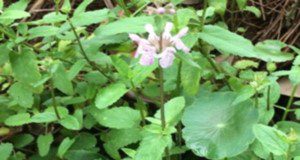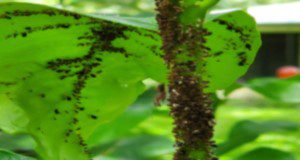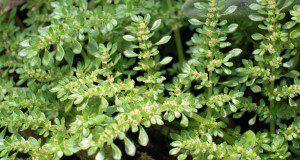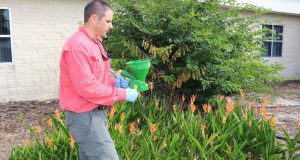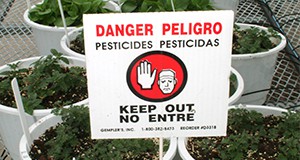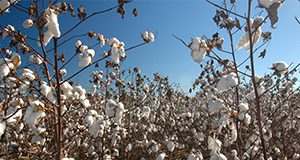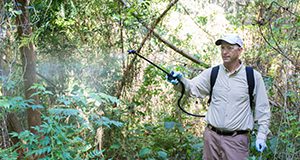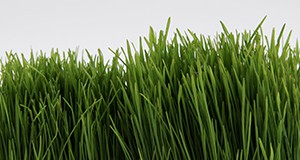Florida betony (Stachys floridana) is a perennial weed in Florida landscape planting beds, gardens, turfgrass, and agricultural production systems. This new 4-page article is written for green industry professionals and others to aid in the identification and management of Florida betony in and around ornamental plants in landscape planting beds. Written by Thomas Smith and Chris Marble, and published by the UF/IFAS Environmental Horticulture Department.
https://edis.ifas.ufl.edu/ep597
Tag: Herbicides
Are Homemade “Pesticides” Legal?
Interest around pesticides and possible alternatives to them have increased in recent years. As individuals seek out possible alternatives, some consider making their own solutions to pest control. Homemade pesticide recipes abound online and are commonly seen in various social media platforms. This new 3-page publication of the UF/IFAS Pesticide Information Office looks at the legality of these mixes, when and where they can be used, and what other considerations need to be taken into account when utilizing these mixes. Written by Brett Bultemeier and Jason Ferrell.
https://edis.ifas.ufl.edu/pi288
Use of Glyphosate and Herbicide Alternatives for Weed Control in Florida Landscape Planting Beds
This new 10-page article is written for landscape professionals and those maintaining landscape areas to guide them in selecting alternatives to glyphosate (the active ingredient in RoundUp®) for postemergence weed control in Florida. Information is also included on preemergence herbicides and integrated weed management (use of chemical and non-chemical controls), which should be the basis of a weed management program. Written by Chris Marble, Joe Neal, and Andy Senesac, and published by the UF/IFAS Environmental Horticulture Department.
https://edis.ifas.ufl.edu/ep580
Florida Homeowner Herbicide Guide: Considerations, Applications, and Selection
While some people opt for professional lawn maintenance companies, some homeowners may wish to perform their own landscape pest control in order to save money, to have more control of what is applied, or simply because they enjoy it. This EDIS publication is for Florida gardeners, horticulturalists and homeowners who want to utilize herbicides to control weeds in their landscape. This new 9-page publication of the UF/IFAS Environmental Horticulture Department discusses common herbicides available at retail stores and how homeowners can use these them safely and effectively. Written by Chris Marble.
https://edis.ifas.ufl.edu/ep575
New Paraquat Requirements
This 2-page document addresses the mitigation measures being undertaken by the EPA which will become new labeling requirements for paraquat (one of the most widely used herbicides registered in the United States) products. Written by Frederick M. Fishel and published by the UF/IFAS Agronomy Department, November 2018.
http://edis.ifas.ufl.edu/pi279
Using Dicamba in Dicamba-Tolerant Crops
After many years in development, dicamba will likely be fully approved for use in tolerant cotton varieties for the 2017 growing season. There is great concern that dicamba drift can result in significant losses in nearby sensitive crops. This concern is well-founded because many crops (such as soybean, snap bean, and peanut) are highly sensitive to extremely low doses of dicamba. All precautions must be followed if these new dicamba formulations are to be used. This 3-page fact sheet discusses herbicide selection, discontinued use of ammonium sulfate, nozzle selection, boom height, and wind speed. It also addresses a few frequently asked questions. Written by J. Ferrell and R. Leon, and published by the UF Agronomy Department, February 2017.
http://edis.ifas.ufl.edu/ag414
Herbicides to Kill Invasive Trees in Home Landscapes and Surrounding Natural Areas
Several plant species that are invasive in natural areas of public lands also occur on private property. Invasive plants on private property that thrive within both landscaped and surrounding natural areas can serve as a source of infestation to other natural areas. Therefore, property owners are encouraged to remove invasive plant species from both areas. This 5-page fact sheet is a major revision that discusses different herbicides, hand-pulling, stump grinding, foliar herbicide application, cut stump herbicide application, basal bark herbicide application, hack-and-squirt, frill, or girdle herbicide application, licenses and training, and control of specific invasive plants. Written by K. A. Langeland and S. F. Enloe, and published by the UF Department of Agronomy, revised May 2016.
http://edis.ifas.ufl.edu/ag259
Metsulfuron-Methyl-Containing Herbicides Potentially Damaging Ornamentals when Applied to Turfgrass
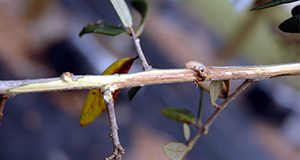
Metsulfuron-methyl, also known as MSM, is an herbicide that is used to control broadleaf weeds and certain grass weeds. It provides effective control of some of the most problematic turfgrass weeds, such as wild garlic, Florida betony, dollar weed, and small Virginia buttonweed. Metsulfuron-methyl is absorbed by plant foliage, so if landscape plants come into contact with the spray or drift they can be injured. This four-page fact sheet describes the potential problems with metsulfuron herbicides, the areas most subsceptible to damage, how to diagnose injury, and how to reduce damage. Written by Chris Marble, Jason Smith, Timothy K. Broschat, Adam Black, Ed Gilman, and Celeste White and published by the School of Forest Resources and Conservation Department.
http://edis.ifas.ufl.edu/fr400
Turfgrass Herbicides: Mechanisms of Action and Resistance Management
Herbicides are an effective tool for controling weeds in turfgrass; however, weeds can become resistant to herbicides and create significant problems for turfgrass production. The best way to combat herbicide resistance is to rotate herbicides with different mechanisms of action (MOA) because using herbicides with different MOAs makes it more likely that weeds resistant to one herbicide will encounter an herbicide to which they are not resistant. This 4-page fact sheet focuses on how to create an herbicide program that uses different MOAs to manage resistant weeds. Written by Ramon G. Leon and Bryan Unruh, and published by the UF Department of Agronomy, August 2015.
http://edis.ifas.ufl.edu/ag398
Calibration of Chemical Applicators Used in Vegetables (HS1220)
 Calibration is the process used to determine the amount of chemical material applied per unit area. Equipment for applying liquid and dry materials must be accurately calibrated for pesticides to work efficiently and to avoid crop injury or death. The pesticide label is a legal document and must be followed. Properly calibrating equipment ensures the product is being applied as specified on the label and that environmental contamination will be minimized. This 6-page fact sheet discusses some methods for calibration of sprayers and dry material spreaders and includes information about calibration to help growers properly apply pesticides. written by M. R. Miller and P. J. Dittmar, and published by the UF Department of Horticultural Sciences, May 2013.
Calibration is the process used to determine the amount of chemical material applied per unit area. Equipment for applying liquid and dry materials must be accurately calibrated for pesticides to work efficiently and to avoid crop injury or death. The pesticide label is a legal document and must be followed. Properly calibrating equipment ensures the product is being applied as specified on the label and that environmental contamination will be minimized. This 6-page fact sheet discusses some methods for calibration of sprayers and dry material spreaders and includes information about calibration to help growers properly apply pesticides. written by M. R. Miller and P. J. Dittmar, and published by the UF Department of Horticultural Sciences, May 2013.
http://edis.ifas.ufl.edu/hs1220
Factors Affecting Herbicide Use in Fruits and Vegetables (HS1219)
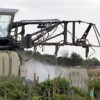 Proper herbicide application is critical for fruit and vegetable growers to effectively manage weeds. Improper herbicide application may lead to herbicide loss from the targeted area, increased crop injury, and reduced weed control. Growers need to take into account a number of factors before and during application in any crop to ensure the herbicide is effective. Herbicide efficacy is greatly affected by timing and environmental conditions. Although complete weed control is not always possible, even slight reductions in weed populations can greatly enhance productivity in fruit and vegetable crops. This 4-page fact sheet reviews techniques and processes to help growers properly apply herbicides. Understanding the processes and applying the following techniques will help to increase the overall efficacy of herbicides in fruit and vegetable production. Written by C. E. Rouse and P. J. Dittmar, and published by the UF Department of Horticultural Sciences, May 2013.
Proper herbicide application is critical for fruit and vegetable growers to effectively manage weeds. Improper herbicide application may lead to herbicide loss from the targeted area, increased crop injury, and reduced weed control. Growers need to take into account a number of factors before and during application in any crop to ensure the herbicide is effective. Herbicide efficacy is greatly affected by timing and environmental conditions. Although complete weed control is not always possible, even slight reductions in weed populations can greatly enhance productivity in fruit and vegetable crops. This 4-page fact sheet reviews techniques and processes to help growers properly apply herbicides. Understanding the processes and applying the following techniques will help to increase the overall efficacy of herbicides in fruit and vegetable production. Written by C. E. Rouse and P. J. Dittmar, and published by the UF Department of Horticultural Sciences, May 2013.
http://edis.ifas.ufl.edu/hs1219
Storage Limitation Statements: Temperature – Herbicides (PI123/PI160)
 This 8-page guide provides information about how temperature affects storage of agricultural herbicides. A table is included that lists many common agricultural herbicides registered for use in Florida, with storage limitation statements. Written by Frederick M. Fishel, and published by the UF Department of Agronomy, April 2013.
This 8-page guide provides information about how temperature affects storage of agricultural herbicides. A table is included that lists many common agricultural herbicides registered for use in Florida, with storage limitation statements. Written by Frederick M. Fishel, and published by the UF Department of Agronomy, April 2013.
http://edis.ifas.ufl.edu/pi160
Rainfast Time for Postemergence Herbicides Commonly Used in the Everglades Agricultural Area: Quick Reference Sheet (SSAGR351/AG359)
 If rainfall occurs soon after herbicide application, it can affect the effectiveness of postemergence herbicides. And they each differ in their time requirements for rain-free periods following application. This 2-page fact sheet shows rainfast time for postemergence herbicides commonly used in the Everglades Agricultural Area for sugarcane and vegetable production. Written by D.C. Odero and published by the UF Department of Agronomy, August 2011. (Photo by Eric Zamora UF/IFAS)
If rainfall occurs soon after herbicide application, it can affect the effectiveness of postemergence herbicides. And they each differ in their time requirements for rain-free periods following application. This 2-page fact sheet shows rainfast time for postemergence herbicides commonly used in the Everglades Agricultural Area for sugarcane and vegetable production. Written by D.C. Odero and published by the UF Department of Agronomy, August 2011. (Photo by Eric Zamora UF/IFAS)
http://edis.ifas.ufl.edu/ag359
PI123/PI160 Storage Limitation Statements: Temperature – Herbicides
Revised! PI-123, a 10-page illustrated guide by Frederick M. Fishel, provides general temperature effects on storage properties of agricultural herbicides. A table is included that lists many of the common agricultural herbicides registered for use in Florida, with storage limitations statements. Includes references. Published by the UF Department of Agronomy, October 2009.
http://edis.ifas.ufl.edu/PI160
